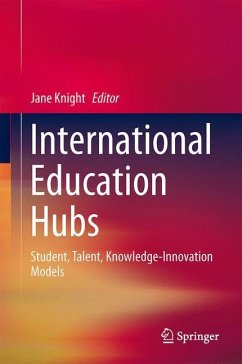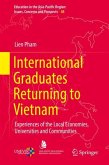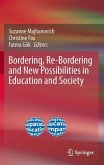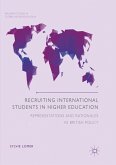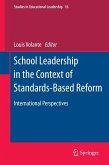Education hubs are the newest development in the international higher education landscape. Countries, zones and cities are trying to position themselves as reputed centres for higher education and research.
But given higher education's current preoccupation with competitiveness, branding, and economic benefits are education hubs merely a fad, a branding exercise, or are they an important innovation worthy of serious investment and attention? This book tries to answer the question through a systematic and comparative analysis of the rationales, actors, policies, plans and accomplishments for six serious country level education hubs - United Arab Emirates, Qatar, Malaysia, Hong Kong, Singapore and Botswana .
The in-depth case studies shows that "one size does not fit all". A variety of factors drive countries to prepare and position themselves as an education hub. They include income generation, soft power, modernization of domestic tertiary education sector, economic competitiveness, need for trained work force, and most importantly a desire to move towards a knowledge or service based economy. In response to these different motivations, three different types of education hubs are being developed: the student hub, talent hub, and knowledge/innovation hub.
Scholars, policy makers, professionals, students and senior decision makers from education, economics, geography, public policy, trade, migration will find that this book challenges some assumptions about crossborder education and provides new insights and information.
But given higher education's current preoccupation with competitiveness, branding, and economic benefits are education hubs merely a fad, a branding exercise, or are they an important innovation worthy of serious investment and attention? This book tries to answer the question through a systematic and comparative analysis of the rationales, actors, policies, plans and accomplishments for six serious country level education hubs - United Arab Emirates, Qatar, Malaysia, Hong Kong, Singapore and Botswana .
The in-depth case studies shows that "one size does not fit all". A variety of factors drive countries to prepare and position themselves as an education hub. They include income generation, soft power, modernization of domestic tertiary education sector, economic competitiveness, need for trained work force, and most importantly a desire to move towards a knowledge or service based economy. In response to these different motivations, three different types of education hubs are being developed: the student hub, talent hub, and knowledge/innovation hub.
Scholars, policy makers, professionals, students and senior decision makers from education, economics, geography, public policy, trade, migration will find that this book challenges some assumptions about crossborder education and provides new insights and information.
"With her book Jane Knight provides another interesting example of how different global phenomena manifest themselves in regional or local contexts in the field of higher education. ... The intended audience seem to be primarily policy makers in the field of higher education and innovation/knowledge creation, but also other readers interested in the ongoing developments in International Education Hubs in the (mainly) Eastern Hemisphere." (Laura Sturzeis, Higher Education, Vol. 70, 2015)
"This volume is the first book to examine a broad range of topics related to international education hubs. For all those who have an interest in education hubs and cross-border education, whether they be a policy-maker, institution manager, scholar or student, there should be much of interest and value in thisbook. ... For anyone who wants to learn more about international education hubs, this volume provides a wealth of information and ideas ... ." (Stephen Wilkins, Journal of Higher Education Policy and Management, Vol. 36 (3), June, 2014)
"This volume is the first book to examine a broad range of topics related to international education hubs. For all those who have an interest in education hubs and cross-border education, whether they be a policy-maker, institution manager, scholar or student, there should be much of interest and value in thisbook. ... For anyone who wants to learn more about international education hubs, this volume provides a wealth of information and ideas ... ." (Stephen Wilkins, Journal of Higher Education Policy and Management, Vol. 36 (3), June, 2014)

